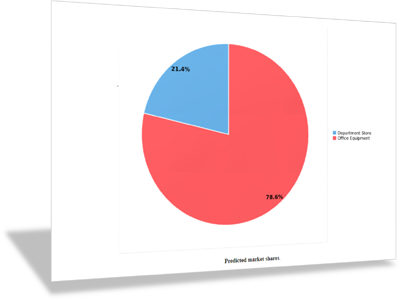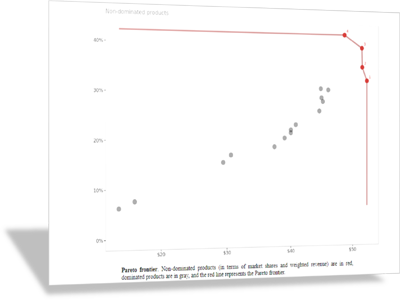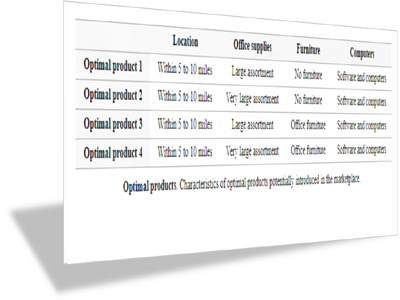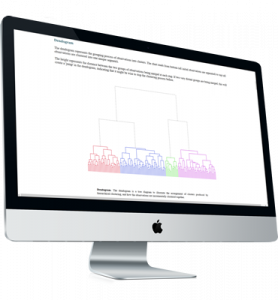
Conjoint analysis
Conjoint analysis is one of the most widely-used marketing research technique to quantify customers’ preferences, predict their choices, understand what trade-offs they are willing to make, and predict market shares.
What you put in...
- Customer ratings of a set of real or potential product offerings, defined by their key attributes
- Market share of existing products
- New product profiles
What you get out...
- Customers’ preferences and responses to new products
- Relative worth of product attributes
- Optimal product design
- Market share estimates for alternative products
- Drivers for purchase choices
- Customers’ willingness to pay for product attributes
- Potential incremental revenue from new offerings/features
Key features

Market share simulations
Whether you provide the preference partworths directly, or you estimate them from rating data, these preferences can be used to run powerful market share simulations using a variety of scenarios (pre-specified product introductions, optimal search) and decision rules (first-choice, share of preference, calibrated on market data, etc.)

Pareto frontier
The conjoint analysis module can search the entire product space and predict the market shares for a new product with any attribute combination. But often, a trade-off has to be made between profitability and market shares, as gaining on one front might hurt the other. In such situations, Enginius will display all the potential products on one space, and highlight the Pareto-efficient frontier, that is, the combination of products that dominates the others in terms of market-share vs. profitability tradeoff.

Advanced options
The advanced options let’s you exclude certain attribute levels from the optimal product search (e.g., if certain levels are not attainable or possible for your firm), or attach incremental revenue figures to each product combination.
About conjoint
The Conjoint Analysis model is widely employed for designing new products. It is a procedure for measuring, analyzing, and predicting customers’ responses to new products and to new features of existing products. It enables companies to decompose customers’ preferences for products and services (provided as descriptions or visual images) into “part-worth” utilities associated with each option of each attribute or feature of the product. Firms can then recombine the part-worths to predict customers’ preferences for any possible combination of attribute options. Firms can use conjoint analysis to:
- Design new products that maximize customer utility.
- Forecast sales/market share of alternative product bundles.
- Identify market segments for which a given product concept has high value.
- Identify the “best” product concept for a target segment



